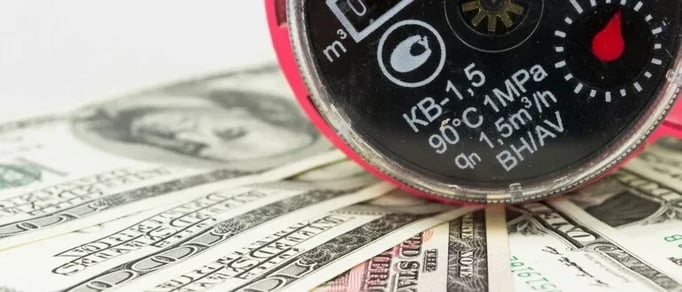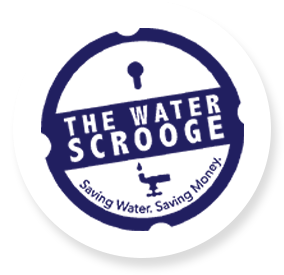
When pressed, most landlords would readily admit they're paying too much for water. But how do you know you're REALLY paying too much? Well, catching a glimpse of your competitor from down the street's total unit bill and experiencing heart palpitations is a good indicator. But so is thoroughly evaluating your current conservations method.
The reality? Even if you are doing routine meter readings (see here for information on our water flow management device), determining exactly what IS and ISN'T normal water usage can be challenging. From our client research, we've found multi-family buildings consume 30-54 gallons of water per day, per person on average. Thus, if your 500-unit building contains 1,000 occupants, that translates to 42,000 gallons per day on the moderate side. That translates to roughly $283 a day or $103,295 a year.
Interestingly, we've found that – with just a few small tweaks – the average landlord can save $500 per unit, per year. As a building owner, water usage can be divided into two categories: What you can easily control and what you can't. Obviously, regulating tenant bathing, grooming and laundry habits is not an option (unless, maybe you're living in George Orwell's 1984)! For the remainder of this article, we'll focus on what you can control to achieve greater water savings:
Inspect Property for Leaks
While searching for leaks might seem like a nuisance, it's important. Leaks account for more than 1 trillion gallons of water wasted per year, according to the Environmental Protection Agency. Here at The Water Scrooge, we've seen savings of up to 40 percent on multi-family building utilities after fixing leaks and employing specific water conservation methods (more on that in a moment).
Frost, freezing, and extremely cold temperatures all put a strain on irrigation systems. A system with a leak as small as a dime can waste as much as 6,300 gallons of water per month. Once you’ve found your leak, you’ll need to install coupling inserts into the pipe before securing it with an outer adjustable band. You can find several videos on Youtube that illustrate exactly what to do. You’ll also want to check your garden hoses for spigot connection leaks. If found, simply replace the nylon or rubber hose washer before ensuring a tight connection using pipe tape and a wrench.
Inspect & Calibrate Toilets
Ranging from small to large, constant to random and heard to, it's no wonder toilet leaks confuse so many of us. And it's even less surprising tenants seldom report them. In a properly functioning toilet, water should only move from the tank to the bowl when being flushed. Conversely, a leaking toilet loses water from the tank to the bowl without being flushed. A toilet can also waste water due to an improperly adjusted or broken fill valve causing water to enter the tank and flow into the overflow tube.
But the most notorious troublemaker is the running toilet! Depending on the water pressure in your building, a running toilet (on the high-end) can leak as much as 200 gallons of water per hour, which adds up to 4,800 gallons per day. The most common cause is a stuck or open flapper inside the tank.
If you consider that 1 in 5 toilets has a leak at any given time, according to the American Water Works Association, you're easily looking at hundreds of thousands of dollars in unnecessary costs for a 100-unit building!
Checking for leaks is relatively easy. Simply, place 10 drops of food coloring in the toilet tank. If the color appears in the bowl after waiting 10 minute, don't celebrate – you have a leak! By regularly inspecting and calibrating toilets for optimal water flow, you can ensure you're not paying any more than you need to on toilet water usage.
Wirelessly Monitor Unit Toilets
Did you know it's now possible to wirelessly monitor unit toilet flush rates from an app on your phone? The new Toilet Scrooge allows you to do exactly that (hmm, maybe our previous George Orwell reference wasn't that far off). The unobtrusive device sits near the base of the toilet, electronically reporting live information to a master database. Number of fill cycles, flushes per day and times of day can all be obtained with the click of a button. Why would you want to know this information?
If you identify a toilet that's utilizing more water than average, you can do an on-site inspection to repair the leak. By installing 24/7 tracking, you'll ensure no toilets malfunctions go missed. Catch only 1 malfunctioning toilet, and the system will have paid for itself. Click here to learn more.
Be Proactive – Install Low-Flow Regulators
The other primary culprit of unsightly water bills is shower usage! Interestingly, shower times vary dramatically by the individual, making it difficult to accurately calculate average family rates. But a conservative, 10-minute shower will use up to 40 gallons with an average showerhead and 20 gallons with a 2-gallon per minute showerhead.
NYC legislation passed in 2010, actually mandated the legal showerhead limit to 2.0 gallons by law. So, if you aren't already in compliance, it's time to get with it and start saving money. There's just one problem: Tenants are notorious for removing low-flow showerheads and replacing them with their own! That's why we designed The Water Scrooge – a hidden, tamper-proof regulator that sits behind a spa-like showerhead. Your tenants won't even know it's there, and you could potentially cut your water bill by 10 to 20 percent (based on our past client history).
Not sure where to start?
At The Water Scrooge, we’ve made it our mission to save precious resources by promoting effective and affordable conservation practices. We provide a series of done-for-you services in conjunction with the purchase of any of our water saving devices.


